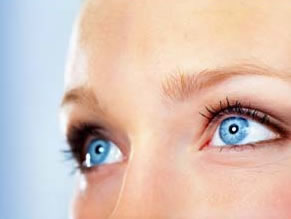Cataract Surgery

Using the most up to date methods and instrumentation, cataract surgery is typically performed using a small incision phacoemulsification technique. This means that the cataract surgery is accomplished using the smallest possible incision, and removal of the lens material is accomplished using an ultrasonic needle.
Femtosecond Laser-Assisted Cataract Surgery (FLACS) allows surgeons to use a laser to make bladeless corneal incisions that are more precise than the cuts made in traditional cataract surgery. Advantages include automated creation of self-healing incisions and reduction of astigmatism, perfectly centered openings for placement of intraocular lenses reduced ultrasonic energy delivery within the eye and potential reduction of complications, especially in higher risk eyes.
 Following proper dilation of the pupil and preparation of the surgical area using betadine or other cleansers, a topical anesthetic is administered to the surface of the eye. An incision of 2.5 to 3 millimeters in length is then created at the junction of the cornea (the clear domed surface on the front of the eye) and the sclera (the white part of the eye).
Following proper dilation of the pupil and preparation of the surgical area using betadine or other cleansers, a topical anesthetic is administered to the surface of the eye. An incision of 2.5 to 3 millimeters in length is then created at the junction of the cornea (the clear domed surface on the front of the eye) and the sclera (the white part of the eye).
Another dose of anesthetic is then administered inside the eye through this incision. The front part of the lens envelope, known as the lens capsule, is carefully opened so that the lens material can be removed. This is accomplished using a needle-like ultrasonic device which pulverizes the hardened and yellowed lens proteins. The pulverized material is simultaneously vacuumed from the eye.
Once all of the cataract material has been removed, and assuming that the lens capsule which was opened at the beginning of the surgery remains strong enough to support the lens implant, a folded intraocular lens specifically chosen by the surgeon to suit your individual needs is then inserted through the original incision and maneuvered into the lens capsule and then centered. The lens will remain inside your eye in this location without moving. Intraocular lenses cannot be felt or sensed in any way by the patient.
In most cases, once the lens is centered within the lens capsule, the instruments are removed, and the surgery is therefore complete. Under most normal circumstances stitches (or sutures) are not required to keep the incision sealed. Should the incision require a suture to be placed for proper sealing, this suture is generally removed within the first week following surgery.
Recovery from surgery is generally very quick, with most patients achieving noticeably better vision within the first 24 hours of the procedure. Patients are generally asked to use two different eye medications, administered as drops several times daily for the first few weeks after surgery. It is important that during the first 7 post-operative days patients refrain from strenuous activity such as lifting weights for exercise or lifting other heavy objects.
Patients should also refrain from eye rubbing during the first few weeks.
INTRAOCULAR LENS
Intraocular lenses come in a variety of materials and designs. Your surgeon generally chooses a lens made of a material that is best suited to your individual situation. All intraocular lenses used in our practice are coated with UV filters. Some lenses are yellow in color. These lenses are theoretically better at blocking the light rays in the blue spectrum which are thought to be related to the development of macular degeneration in some patients.
Some intraocular lenses are designed to be multifocal in certain lighting circumstances, which may enable patients to see both at distance and near without the aid of spectacles.
